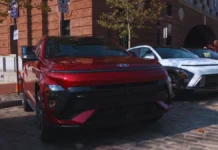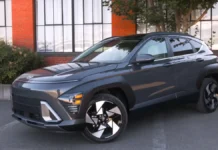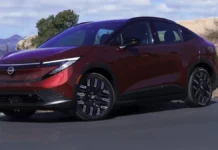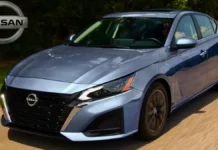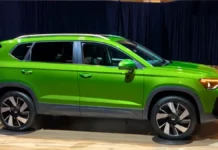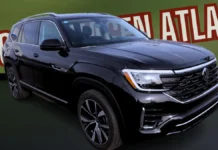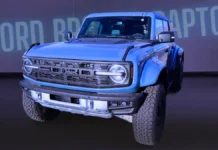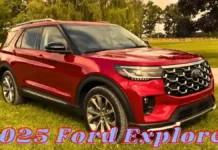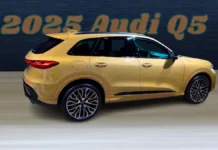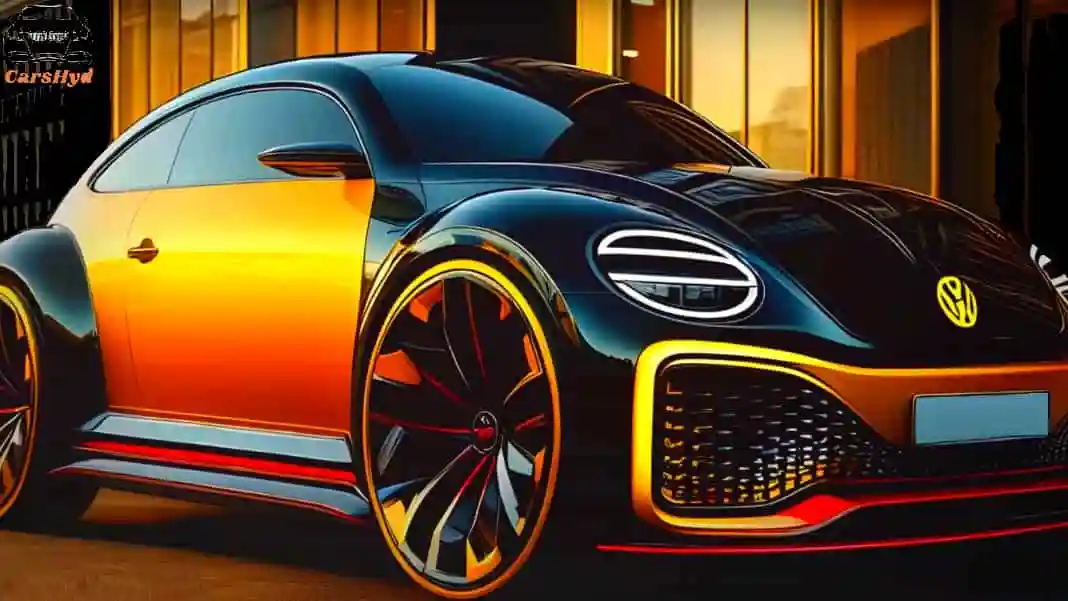The Volkswagen Beetle, an iconic vehicle with a rich history, is set to make a comeback in 2025. This new model promises to blend classic design elements with modern technology, catering to both nostalgic fans and a new generation of drivers. In this article, we’ll explore everything you need to know about the 2025 VW Beetle, including new trends, speculations, and what to expect from this highly anticipated release.
Table of contents
- Overview
- A Brief History of the VW Beetle
- 2025 Volkswagen Beetle Design and Exterior Features
- 2025 Volkswagen Beetle Interior and Technology
- Volkswagen Beetle2025 Engine and Performance
- 2025 Volkswagen Beetle Safety and Driver Assistance
- 2025 Volkswagen Beetle Pricing and Release Date
- The Future of the VW Beetle
- Why the 2025 VW Beetle is Worth the Wait
- Final thought
- FAQs About Volkswagen Beetle 2025
Overview
The Volkswagen Beetle has always been more than just a car; it’s a cultural icon. For decades, it has captured the hearts of millions around the world with its distinctive design and reliable performance. The last Beetle rolled off the production line in 2019, marking the end of an era. However, Volkswagen’s recent announcement of the 2025 Beetle has sparked excitement among car enthusiasts and loyal fans alike. This article delves into the details of the 2025 VW Beetle, offering insights into its design, features, and what makes this new model a must-have for both collectors and new buyers.
A Brief History of the VW Beetle
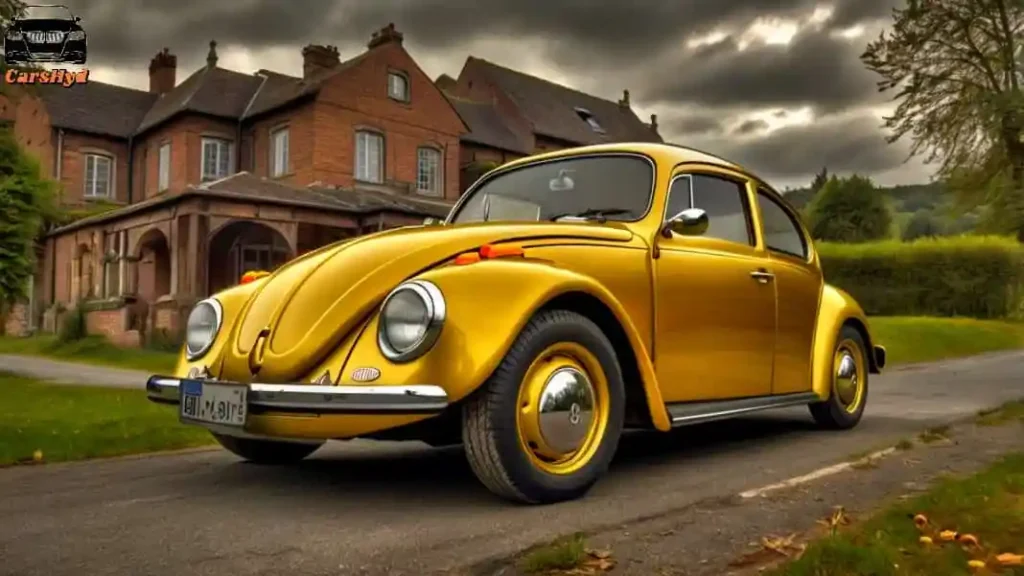
The Origin of an Icon
The VW Beetle’s story began in 1938 when Ferdinand Porsche designed the first model under the directive of Adolf Hitler, who wanted a “people’s car” (Volkswagen). The car’s simple yet functional design quickly made it popular, and after World War II, it became a symbol of economic revival in Germany. By the 1960s, the Beetle had achieved global success, becoming the best-selling car of all time.
Evolution Over the Decades
Over the years, the Beetle underwent several transformations, adapting to changing consumer needs and technological advancements. The 1950s and 60s saw the Beetle rise to fame in the United States, where it became synonymous with the counterculture movement. The Beetle’s design evolved from the classic rounded shape to more modern, sleeker lines in the 1998 New Beetle, which offered updated features while maintaining the original’s charm.
The End of an Era and the 2025 Revival
In 2019, Volkswagen announced the discontinuation of the Beetle, leading to a wave of nostalgia and lament among fans. The final model, a 2019 Beetle Final Edition, was a tribute to the car’s legacy. However, Volkswagen’s commitment to innovation and sustainability has paved the way for the Beetle’s return in 2025, with a design and feature set that promise to honor its heritage while embracing the future.
2025 Volkswagen Beetle Design and Exterior Features
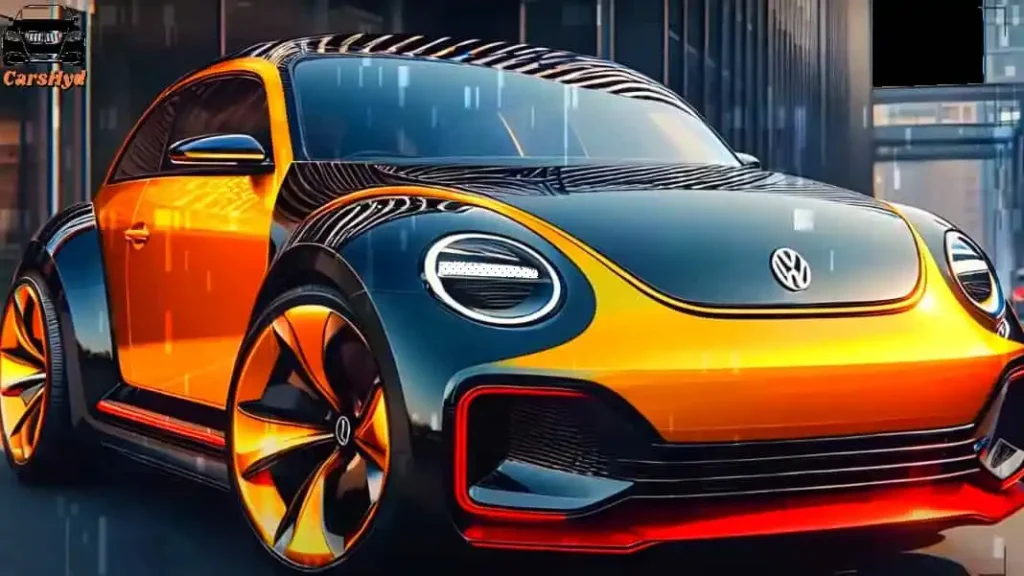
Classic Design with a Modern Twist
The 2025 VW Beetle is expected to retain its iconic silhouette, with its rounded roofline and compact body. However, it will incorporate modern design elements to appeal to contemporary tastes. Expect sharper lines, a wider stance, and a more aggressive front fascia that gives the Beetle a bold, updated look. Volkswagen aims to balance the nostalgia of the classic Beetle with the demands of modern drivers.
The 2025 VW Beetle: Expected Color Options
One of the Beetle’s signature features has always been its vibrant color palette. The 2025 model is likely to continue this tradition, offering a range of color options that may include classic shades like red, yellow, and blue, along with new, trendier hues. Metallic finishes and possibly two-tone color schemes could also be part of the offering, allowing for greater personalization.
Aerodynamics and Performance Enhancements
To improve performance and fuel efficiency, the 2025 Beetle will likely feature enhanced aerodynamics. A sleeker body design, possibly with active aerodynamics like a retractable spoiler, will help reduce drag. The use of lightweight materials could further improve the car’s efficiency and handling, making it more agile and responsive on the road.
2025 Volkswagen Beetle Interior and Technology
A Look Inside the 2025 VW Beetle
The interior of the 2025 VW Beetle is expected to blend retro elements with cutting-edge technology. The dashboard may feature a minimalist design, echoing the simplicity of earlier models, but with modern touches such as a digital instrument cluster and a large infotainment screen. The cabin will likely be more spacious than previous versions, with ergonomic seating that provides comfort for both driver and passengers.
Cutting-Edge Technology Integration
Technology will be a focal point in the 2025 Beetle. Expect a fully digital cockpit with a customizable instrument panel, a large touchscreen for infotainment, and advanced connectivity options like Apple CarPlay, Android Auto, and possibly wireless charging. Volkswagen may also introduce a heads-up display (HUD) that projects important driving information onto the windshield, keeping the driver’s eyes on the road.
Comfort and Luxury Features
Volkswagen is likely to equip the 2025 Beetle with premium materials and finishes, elevating the overall driving experience. Features such as heated and ventilated seats, ambient lighting, and a premium audio system could be standard or available options. The use of sustainable materials may also be a key focus, reflecting the industry’s shift towards eco-friendly practices.
Volkswagen Beetle2025 Engine and Performance
Powertrain Options
The 2025 VW Beetle is expected to offer a range of powertrain options, catering to different performance preferences. While a traditional internal combustion engine (ICE) is likely, there is speculation that Volkswagen might introduce hybrid or even fully electric versions of the Beetle, aligning with the company’s commitment to electric mobility.
Expected Performance Metrics
For the ICE variants, expect a turbocharged engine that delivers a balance of power and efficiency. The electric variant, if offered, could feature a single or dual-motor setup with impressive acceleration and a respectable range on a single charge. Performance metrics like 0-60 mph times and top speed will vary depending on the powertrain, but all versions are expected to offer a fun and engaging driving experience.
Fuel Efficiency and Eco-Friendliness
Given the increasing focus on environmental sustainability, the 2025 Beetle will likely be designed with fuel efficiency in mind. The use of lightweight materials, improved aerodynamics, and possibly hybrid or electric powertrains will contribute to reducing the car’s carbon footprint. Volkswagen’s push towards electrification means that the Beetle could become a symbol of eco-friendly driving. For more information about the Beetle’s fuel economy, visit the EPA’s website.
2025 Volkswagen Beetle Safety and Driver Assistance
Advanced Safety Features
Safety is paramount in modern vehicles, and the 2025 VW Beetle will be no exception. Expect a suite of advanced safety features, including adaptive cruise control, lane-keeping assist, and automatic emergency braking. Volkswagen’s focus on safety will ensure that the Beetle meets or exceeds all modern safety standards.
Driver Assistance Technologies
In addition to traditional safety features, the 2025 Beetle is expected to include advanced driver assistance systems (ADAS) such as blind-spot monitoring, parking assist, and possibly a semi-autonomous driving mode. These technologies will not only enhance safety but also improve convenience, making daily driving less stressful.
Volkswagen’s Commitment to Safety
Volkswagen has a long history of prioritizing safety, and the 2025 Beetle will continue this tradition. The car will likely be equipped with multiple airbags, a reinforced body structure, and other safety innovations designed to protect occupants in the event of a collision. Additionally, Volkswagen may introduce new safety technologies that have not yet been seen in this segment.
Visit the National Highway Traffic Safety Administration (NHTSA) and Insurance Institute for Highway Safety (IIHS) websites.
2025 Volkswagen Beetle Pricing and Release Date
Expected Price Range
The pricing of the 2025 VW Beetle is a topic of much speculation. Based on current trends and the features expected in the new model, the starting price is likely to be in the range of $25,000 to $30,000. Higher trims with more advanced features and performance options could push the price closer to $40,000 or more.
Market Availability
The 2025 VW Beetle is expected to be available in major global markets, including the United States, Europe, and Asia. Volkswagen will likely launch the car with a significant marketing campaign, highlighting its return and the blend of tradition and innovation that it represents. Availability in the U.S. market is expected in late 2024 or early 2025.
Potential Competitors in the Segment
The 2025 VW Beetle will face competition from other compact and retro-styled cars, such as the MINI Cooper and Fiat 500. However, its unique blend of history, design, and modern features will likely set it apart from the competition. Volkswagen’s strong brand reputation and loyal fan base will also play a crucial role in the Beetle’s success.
The Future of the VW Beetle
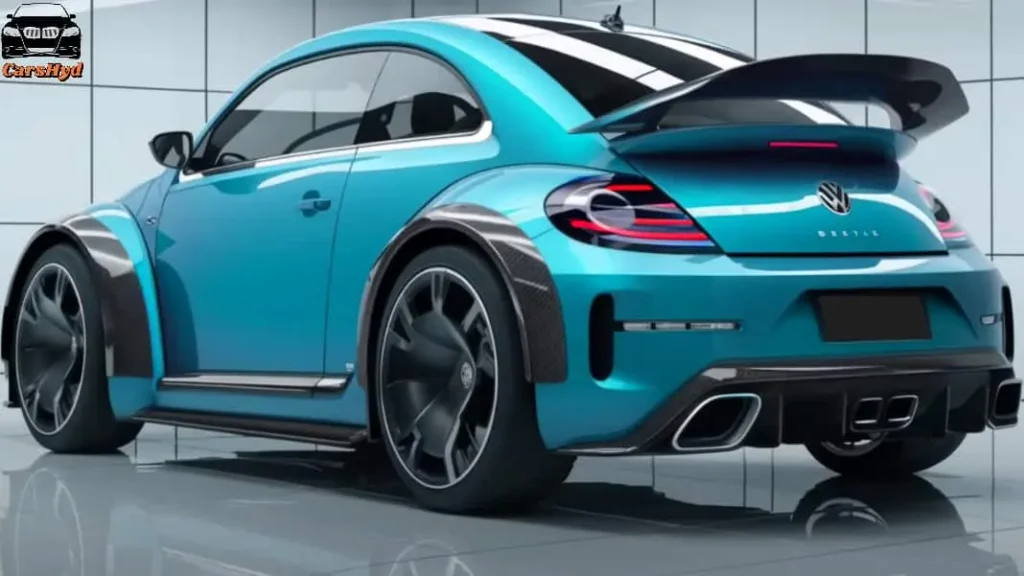
Speculations on Future Variants
There is speculation that Volkswagen could introduce additional variants of the 2025 Beetle, including a convertible version or a sportier model with enhanced performance features. The possibility of a fully electric Beetle also looms large, especially as Volkswagen continues to expand its electric vehicle lineup.
Beetle in the Electric Era
As the automotive industry shifts towards electric vehicles (EVs), the Beetle could play a significant role in Volkswagen’s electric future. An electric Beetle would not only appeal to eco-conscious consumers but also position the Beetle as a symbol of innovation and sustainability. The success of this model could lead to further electrification of the Beetle lineup.
Consumer Expectations and Market Trends
Consumer expectations for the 2025 VW Beetle are high, with many hoping for a vehicle that combines the charm of the original with the advancements of modern technology. Market trends indicate a growing interest in compact, retro-styled cars with a focus on sustainability. The Beetle’s return at this time could capitalize on these trends, making it a strong contender in its segment.
Why the 2025 VW Beetle is Worth the Wait
Nostalgia Meets Innovation
The 2025 VW Beetle is more than just a car; it’s a revival of a cultural icon. For many, the Beetle represents a connection to the past, and its return brings with it a wave of nostalgia. However, this new model is not just about looking back; it’s about combining the best of the past with the innovations of the future.
Investment Value
The 2025 Beetle is likely to hold its value well, especially given the significance of this model in automotive history. Collectors and enthusiasts may see this car as an investment, particularly if Volkswagen produces it in limited quantities. The blend of classic design and modern features makes it a desirable vehicle for a wide range of buyers.
Community and Culture
The Beetle has always been more than just a car; it’s a part of a larger community and culture. The 2025 model is expected to continue this tradition, bringing together Beetle enthusiasts from around the world. Whether through car clubs, online forums, or events, the Beetle community will undoubtedly rally around this new model, keeping the spirit of the Beetle alive.
Final thought
The 2025 VW Beetle is shaping up to be one of the most anticipated car releases of the decade. With its blend of classic design and modern technology, it promises to offer something for everyone ‘‘whether you’re a long’’ time Beetle fan or a new driver looking for a unique and stylish vehicle. As Volkswagen continues to innovate, the Beetle’s return signals not just the revival of an icon, but also a commitment to the future of driving.
FAQs About Volkswagen Beetle 2025
– The starting price of the 2025 VW Beetle is expected to be between $25,000 and $30,000.
– There is speculation that the 2025 Beetle may include hybrid or fully electric versions, aligning with Volkswagen’s push towards electrification.
– The 2025 Beetle is likely to offer a range of vibrant color options, including classic shades like red and yellow, along with new, trendier hues
– The 2025 Beetle retains the iconic silhouette of its predecessors but incorporates modern design elements and technology, making it a blend of classic and contemporary.
– The 2025 Beetle is expected to include advanced safety features such as adaptive cruise control, lane-keeping assist, and automatic emergency braking.
– The 2025 VW Beetle is expected to be available in the United States in late 2024 or early 2025.


